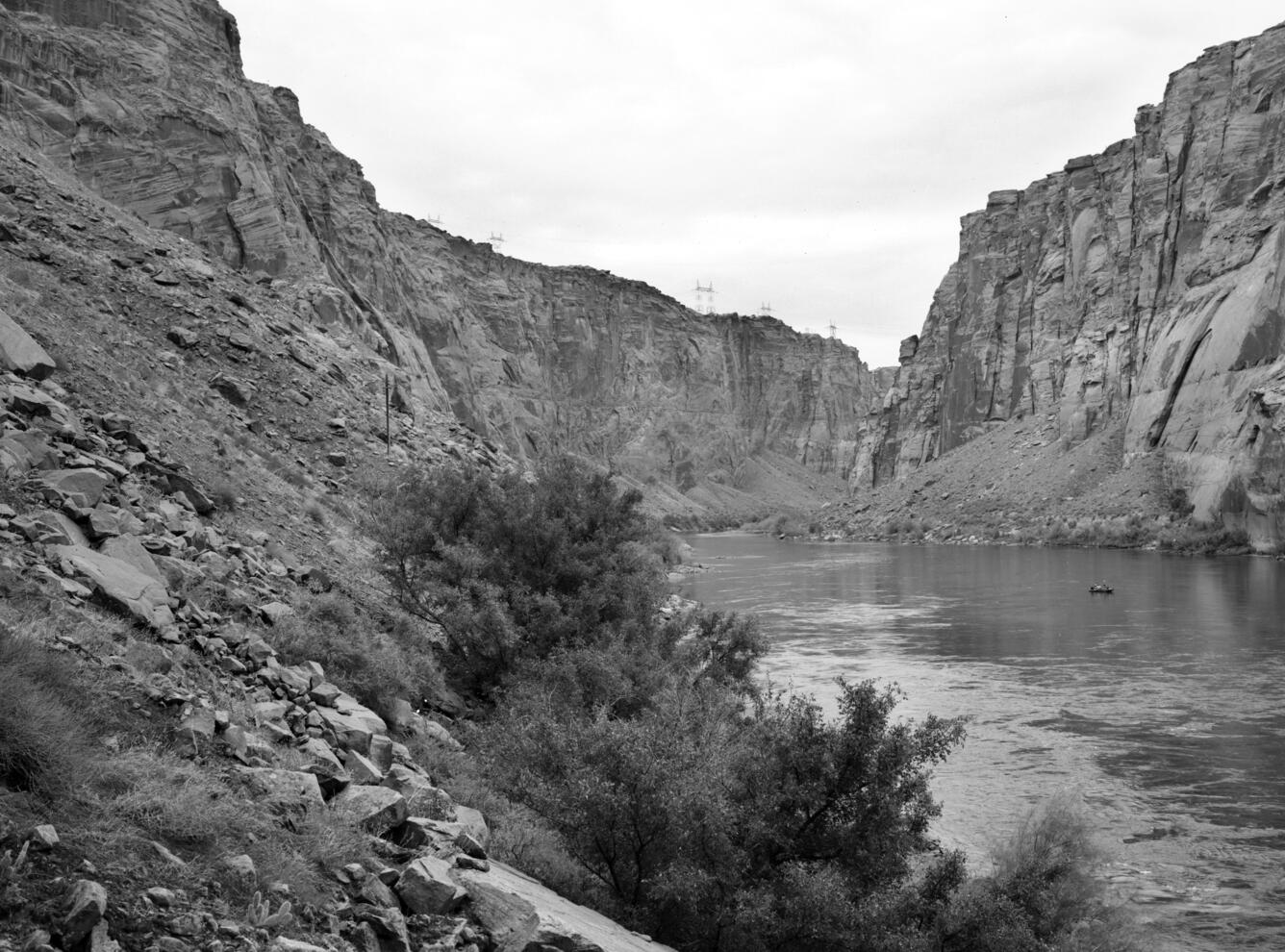Repeat photograph taken in 1992 of the Colorado River below Glen Canyon Dam, a match to the 1889 image by Nims from the Stanton Expedition

Detailed Description
A USGS repeat photograph of Glen Canyon Dam taken on October 29, 1992, as a match to the 1889 Franklin Nims image of the site before the dam was built, at Colorado River mile -14.7, during the Stanton Expedition. The view is taken looking downstream below the dam, from river left. Stake (camera point) s2638 in the SBSC's Southwest Repeat Photography Collection.
Excerpt of the Stanton Survey History by Robert H. Webb, USGS, public domain (from the now unavailable webpage on the subject):
In May 1889, railroad engineer Robert Brewster Stanton, in collaboration with real estate investor Frank M. Brown, began a survey of the Green and Colorado River corridors. Their goal was to construct a railroad line from Grand Junction, Colorado to San Diego, California, one that would wind at river-level through several of the Colorado River’s canyons. While that expedition ended in disaster in July after three men—one of them Brown—drowned in Grand Canyon, Stanton successfully completed the survey that winter (1889-1890). The expedition quickly discovered that conducting the survey by instrument was far too time-consuming for their allotted time, so the men turned to line-of-site photographs taken on newfangled flexible roll film (rather than the cumbersome glass plates used by their predecessors). Although the railroad project never got past the planning stages, the photographs would prove to be invaluable as the basis for repeat photography a century later. From 1989 to 1995, the USGS re-photographed nearly all of the images that the expedition’s photographers—Franklin A. Nims and, after Nims was injured and left the expedition, Stanton himself—took in both Grand and Cataract Canyons. The photographs reveal changes in desert and riparian vegetation, rapids, and beaches, as a result of both natural and human-caused processes. Many of the Grand Canyon images were published in the book “Grand Canyon, A Century of Change,” by Robert Webb, and a selection of the Cataract Canyon images appeared in “Cataract Canyon: A Human and Environmental History of the Rivers in Canyonlands,” by Robert Webb, Jayne Belnap, and John Weisheit. In 2010, the USGS re-matched many of the images, both in Grand Canyon and Cataract Canyon.
A century later, the presence of Glen Canyon Dam, which is just upstream, affects this view and all others downstream that show the river corridor. Large power poles dominate the skyline, a small power line crosses in the midground, and riparian vegetation, mostly netleaf hackberry and non-native tamarisk, has become established along the river corridor now protected from large floods. The shrubs growing along the slopes include Mormon tea, sand sagebrush, prickly pear cactus, and non-native Russian thistle. A small area of biological soil crust is apparent at lower left. Photo credit: Robert H. Webb, USGS.
Sources/Usage
Public Domain.

